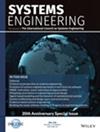关键基础设施控制系统的多关注点保证度量模型
IF 1.6
3区 工程技术
Q4 ENGINEERING, INDUSTRIAL
引用次数: 0
摘要
本文章由计算机程序翻译,如有差异,请以英文原文为准。
A model for measuring multi‐concern assurance of critical infrastructure control systems
Digital transformation of engineering practice, paradigms, processes, and workforce engender agreement uncertainty among professionals, particularly in the critical industry control system field. Control systems are susceptible to cyber‐mediated changes that can uniquely affect the control of the physical world from data‐centric information systems. Change to the system can be introduced by any proposed or forced alteration that affects the acceptability, suitability, feasibility, or resiliency to perform its intended mission, either positively or negatively. The potential impact of the cybersecurity threat on control systems is difficult to quantify. Agreement among professionals about decision authority and Command and Control (C2) over this threat is even more challenging to quantify. Understanding what cybersecurity entails still needs to be widely understood by the critical infrastructure control system workforce, and the control system assets are not widely understood by the Information Technology (IT) workforce. This research introduces a model and methodology for measuring multi‐concern assurance through the statistical uncertainty analysis of Likert semantic differential scales. The model addresses agreement in priority, the lack of which means there might be competing aims, competing spending, and competing focus on different aspects of the cybersecurity governance or policy as examples. The outcome identifies where different types of professionals do not agree about cybersecurity readiness and best practices for critical infrastructure control systems.
求助全文
通过发布文献求助,成功后即可免费获取论文全文。
去求助
来源期刊

Systems Engineering
工程技术-工程:工业
CiteScore
5.10
自引率
20.00%
发文量
0
审稿时长
6 months
期刊介绍:
Systems Engineering is a discipline whose responsibility it is to create and operate technologically enabled systems that satisfy stakeholder needs throughout their life cycle. Systems engineers reduce ambiguity by clearly defining stakeholder needs and customer requirements, they focus creativity by developing a system’s architecture and design and they manage the system’s complexity over time. Considerations taken into account by systems engineers include, among others, quality, cost and schedule, risk and opportunity under uncertainty, manufacturing and realization, performance and safety during operations, training and support, as well as disposal and recycling at the end of life. The journal welcomes original submissions in the field of Systems Engineering as defined above, but also encourages contributions that take an even broader perspective including the design and operation of systems-of-systems, the application of Systems Engineering to enterprises and complex socio-technical systems, the identification, selection and development of systems engineers as well as the evolution of systems and systems-of-systems over their entire lifecycle.
Systems Engineering integrates all the disciplines and specialty groups into a coordinated team effort forming a structured development process that proceeds from concept to realization to operation. Increasingly important topics in Systems Engineering include the role of executable languages and models of systems, the concurrent use of physical and virtual prototyping, as well as the deployment of agile processes. Systems Engineering considers both the business and the technical needs of all stakeholders with the goal of providing a quality product that meets the user needs. Systems Engineering may be applied not only to products and services in the private sector but also to public infrastructures and socio-technical systems whose precise boundaries are often challenging to define.
 求助内容:
求助内容: 应助结果提醒方式:
应助结果提醒方式:


